0 licences in the balance
Page 187
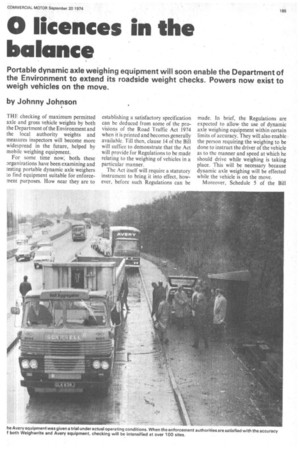
Page 188
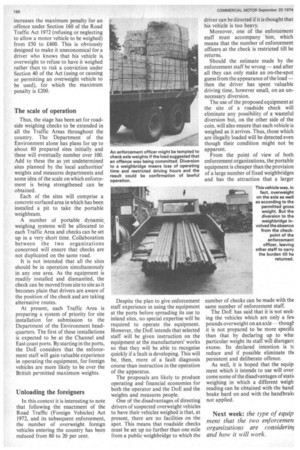
Page 189
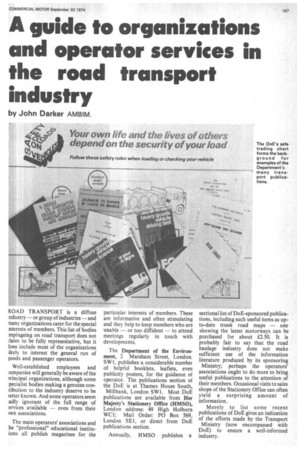
Page 190
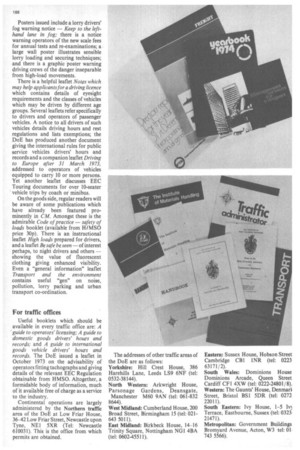
Page 191
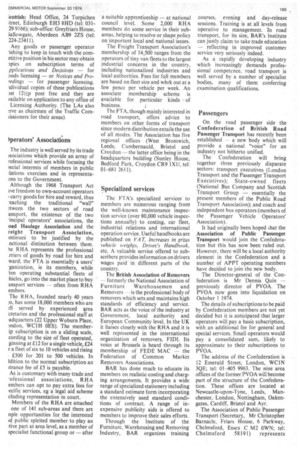
Page 192
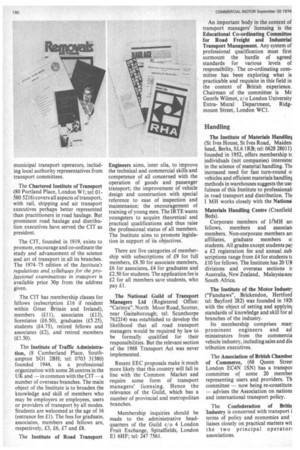
If you've noticed an error in this article please click here to report it so we can fix it.
Portable dynamic axle weighing equipment will soon enable the Department of the Environment to extend its roadside weight checks. Powers now exist to weigh vehicles on the move.
by Johnny Johnson
THE checking of maximum permitted axle and gross vehicle weights by both the Department of the Environment and the local authority weights and measures inspectors will become more widespread in the •future, helped by mobile weighing equipment.
For some time now, boththese organi7ations have been examining and testing portable dynamic axle weighers to find equipment suitable for enforcement purposes. How near they are to establishing a satisfactory specification can be deduced from some of the provisions of the Road Traffic Act 1974 when it is printed and becomes generally available. Till then, clause 14 of the Bill will suffice to demonstrate that the Act will provide for Regulations to be made relating to the weighing of vehicles in a particular manner.
The Act itself will require a statutory instrument to bring it into effect, however, before such Regulations can be made. In brief, the Regulations are expected to allow the use of dynamic axle weighing equipment within certain limits of accuracy. They will also enable the person requiring the weighing to be done to instruct the driver of the vehicle as to the manner and speed at which he should drive while weighing is taking place. This will be necessary because dynamic axle weighing will be effected while the vehicle is on the move.
Moreover, Schedule 5 of the Bill increases the maximum penalty for an offence under Section 160 of the Road Traffic Act 1972 (refusing or neglecting to allow a motor vehicle to be weighed) from £50 to £400. This is obviously designed to make it uneconomical for a driver who knows that his vehicle is overweight to refuse to have it weighed rather than to risk a conviction under Section 40 of the Act (using or causing or permitting an overweight vehicle to be used), for which the maximum penalty is £200.
The scale of operation
Thus, the stage has been set for roadside weighing checks to be extended in all the Traffic Areas throughout the country. The Department of the Environment alone has plans for up to about 80 prepared sites initially and these will eventually number over 100.
Add to these the as yet undetermined sites planned by the local authorities' weights and measures departments and some idea of the scale on which enforcement is being strengthened can be obtained.
Each of the sites will comprise a concrete surfaced area in which has been installed a pit to take the portable weighbea m.
A number of portable dynamic, weighing systems will be allocated to each Traffic Area and checks can be set up in a very short time. Collaboration between the two organizations concerned will ensure that checks are not duplicated on the same road.
It is not intended that all the sites should be in operation simultaneously in any one area. As the equipment is readily installed and dismantled, the check can be moved from site to site as it becomes plain that drivers are aware of the position of the check and are taking alternative routes.
At present, each Traffic Area is preparing a system of priority for site installation for submission to the Department of the Environment headquarters. The first of these installations is expected to be at the Channel and East coast ports. By starting in the ports, the DoE considers that the enforce ment staff will gain valuable experience in operating the equipment, for foreign vehicles are more likely to be over the British permitted maximum weights.
Unloading the foreigners
In this context it is interesting to note that following the enactment of the Road Traffic (Foreign Vehicles) Act 1972, and its subsequent enforcement, the number of overweight foreign vehicles entering the country has been reduced from 80 to 20 per cent. Despite the plan to give enforcement staff experience in using the equipment at the ports before spreading its use to inland sites, no special expertise will be required to operate the equipment. However, the DoE intends that selected staff will be given instruction on the equipment at the manufacturers' works so that they will be able to recognise quickly if a fault is developing. This will be, then, more of a fault diagnosis course than instruction in the operation of the apparatus.
The proposals are likely to produce operating and financial economies for both the operator and the DoE and the weights and measures people.
One of the disadvantages of directing drivers of suspected overweight vehicles to have their vehicles weighed is that, at present, there are no facilities on the spot. This means that roadside checks must be set up no further than one mile from a public weighbridge to which the driver can be directed if it is thought that his vehicle is too heavy.
Moreover, one of the enforcement staff must accompany him, which means that the number of enforcement officers at the check is restricted till he returns.
Should the estimate made by the enforcement staff be wrong — and after all they can only make an on-the-spot guess from the appearance of the load — then the driver has spent valuable driving time, however small, on an unnecessary diversion.
The use of the proposed equipment at the site of a roadside check will eliminate any possibility of a wasteful diversion but, on the other side of the coin, will also ensure that each vehicle is weighed as it arrives. Thus, those which are illegally loaded will be detected even though their condition might not be apparent.
From the point of view of both enforcement organizations, the portable equipment is cheaper than the provision of a large number of fixed weighbridges and has the attraction that a larger number of checks can be made with the same number of enforcement staff.
The DoE has said that it is not seek. ing the vehicles which are only a fem pounds overweight on an axle — thougk it is not prepared to be more specific than that by declaring up to wha. particular weight its staff will disregarc excess. Its declared intention is tc reduce and if possible eliminate thc persistent and deliberate offence.
As well, it is hoped that the equip ment which it intends to use will over come some of the disadvantages of static weighing in which a different weigh reading can be obtained with the hand brake hard on and with the handbralo not applied.
Next week: the type of equip ment that the two enforcemen organizations are considerim and how it will work.
ROAD TRANSPORT is a diffuse ndustry — or group of industries — and many organizations cater for the special nterests of members. This list of bodies mpingeing on road transport does not ;laim to be fully representative, but it loes include most of the organizations ikely to interest the general run of goods and passenger operators.
Well-established employees and :ompanies will generally be aware of the nincipal organizations, although some .pecialist bodies making a genuine conribution to the industry deserve to be ietter known. And some operators seem adly ignorant of the full range of ervices available — even from their )wn associations.
The main operators' associations and he "professional" educational instituions all publish magazines for the particular interests of members. These are informative and often stimulating and they help to keep members who are unable — or too diffident — to attend meetings regularly in touch with developments.
The Department of the Environment, 2 Marsham Street, London. SW1, publishes a considerable numbet of helpful booklets, leaflets, even publicity posters, for the guidance of operator. The publications section of the DoE is at Thames House South, Millbank, London SW1. Most DoE publications are available from Her Majesty's Stationery Office (HMSO), London address: 49 High Holborn WC I ; Mail Order: PO Box 569, London SE1, or direct from DoE publications section.
Annually, HMSO publishes a sectional list of DoE-sponsored publications, including such useful items as upto-date trunk road maps — one showing the latest motorways can be purchased for about £2.50. It is probably fair to say that the road haulage industry does not make sufficient use of the information literature produced by its sponsoring Ministry; perhaps the operators' associations ought to do more to bring useful publications to the attention of their members. Occasional visits to sales shops of the Stationery Office can often yield a surprising amount of information.
Merely to list some recent publications of DoE gives an indication of the efforts made by the Transport Ministry (now encompassed with DoE) to ensure a well-informed industry. Posters issued include a lorry drivers' fog warning notice — Keep to the left hand lane in fog; there is a notice warning operators of the new scale fees for annual tests and re-examinations; a large wall poster illustrates sensible lorry loading and securing techniques; and there is a graphic poster warning driving crews of the danger inseparable from high-load movements.
There is a helpful leaflet Notes which may help applicants for a driving licence which contains details of eyesight requirements and the classes of vehicles which may be driven by different age groups. Several leaflets refer specifically to drivers and operators of passenger vehicles. A notice to all drivers of such vehicles details driving hours and rest regulations and lists exemptions; the DoE has produced another document giving the international rules for public service vehicles drivers' hours and records and a companion leaflet Driving to Europe after 31 March 1973, addressed to operators of vehicles equipped to carry 10 or more persons.
Yet another leaflet discusses EEC Touring documents for over 10-seater vehicle trips by coach or minibus.
On the goods side, regular readers will be aware of some publications which have already been featured pro minently in CM. Amongst these is the admirable Code of practice — safety of loads booklet (available from HIMS0 price 30p). There is an instructional leaflet High loads prepared for drivers, and a leaflet Be safe be seen — of interest perhaps, to night drivers and others showing the value of fluorescent clothing giving enhanced visibility.
Even a "general information" leaflet Transport and the environment contains useful "gen" on noise, pollution, lorry parking and urban transport co-ordination.
For traffic offices
Useful booklets which should be available in every traffic office are: A ' guide to operator s' licensing; A guide to domestic goods drivers' hours and records; and A guide to international goods vehicle drivers' hours and records. The DoE issued a leaflet in October 1973 on the advisability of operators fitting tachographs and giving details of the relevant EEC Regulation obtainable from HMSO. Altogether, a formidable body of information, much of it available free of charge as a service to the industry.
Continental operations are largely administered by the Northern traffic area of the DoE at Low Friar House, 36-42 Low Friar Street, Newcastle upon Tyne, NE! 5XR (Tel: Newcastle 610031). This is the office from which permits are obtained. The addresses of other traffic areas of the DoE are as follows: Yorkshire: Hill Crest House, 386 Harehills Lane, Leeds LS9 6NF (tel: 0532-38144).
North Western: Arkwright House, Parsonage Gardens, Deansgate, Manchester M60 9AN (tel: 061-832 8644).
West Midland: Cumberland House, 200 Broad Street, Birmingham 15 (tel: 021643 5011).
East Midland: Birkbeck House, 14-16 Trinity Square, Nottingham NG1 4BA (tel: 0602-45511). Eastern: Sussex House, Hobson Street Cambridge CB1 1NR (tel: 0223 63171/ 2).
South Wales: Dominions House Dominions Arcade, Queen Street Cardiff CFI 4XW (tel: 0222-24801/8), Western: The Gaunts' House, Denmari Street, Bristol BSI 5DR (tel: 0272 22011).
South Eastern: Ivy House, 1-5 Iv Terrace, Eastbourne, Sussex (tel: 0323 21471).
Metropolitan: Government Buildings Bromyard Avenue, Acton, W3 tel: 01 743 5566). cottish: Head Office, 24 Torpichen ,treet, Edinburgh EH3 8HD (tel: 03129 9166); sub-office: Greyfriars House, iallowgate, Aberdeen AB9 2ZS (tel: 224-23411).
Any goods or passenger operator ishing to keep in touch with the cornetitive position in his sector may obtain )pies on subscription terms of pplications and Decisions — for Dods licensing — or Notices and Pro?edings — for passenger licensing. tdividual copies of these publications )st 121/2p post free and they are vailable on application to any office of Licensing Authority. (The LAs also ;rye as chairmen of the Traffic Corntissioners for their areas).
Iperators' Associations
The industry is well served by its trade ;sociations which provide an array of rofessional services while focusing the )ecial interests of members in public !lotions exercises and in representaons to the Government.
Although the 1968 Transport Act we freedom to own-account operators carry goods for hire and reward, thus -eaching the traditional "wall" .tween the two sectors of road ansport, the existence of the two -incipal operators' associations, the oad Haulage Association and the reight Transport Association, intinuei to be justified by the nctional distinction between them. he RHA represents the professional .rriers of goods by road for hire and ward; the FTA is essentially a users' .ganization, ie its members, while 'ten operating substantial fleets of hides, go into the market place to buy import services — often from RHA embers.
The RHA. founded nearly 40 years ;o, has some 18,000 members who are :.11 served by experienced area cretaries and the professional staff at adquarters (22 Upper Woburn Place, )ndon, WC1H OES). The memberip subscription is on a sliding scale, cording to the size of fleet operated, ginning at £12 for a single vehicle, £24 r a fleet of six to 10 vehicles and rising £300 for 201 to 500 vehicles. In ldition to the normal subscription an ttrance fee of £5 is payable.
As is customary with many trade and -ofessional associations, RHA embers can opt to pay extra fees for ccific services, eg a legal aid scheme eluding representation in court.
Members of the RHA are attached one of 141 sub-areas and there are nple opportunities for the interested id public spirited member to play an tive part at area level, as a member of specialist functional group or — after a suitable apprenticeship — at national council level. Some 2,000 RHA members do some service in their subareas, helping to resolve or shape policy on important local and national issues.
The Freight Transport Association's membership of 14,500 ranges from the operators of tiny van fleets to the largest industrial concerns in the country, includinv nationalized industries and local authorities. Fees for full members are based on fleet size and wbrk out at a few pence per vehicle per week. An associate membership scheme is available for particular kinds of business.
The FTA, though mainly interested in road transport, offers advice to members on other forms of transport since modern distribution entails the use of all modes. The Association has five regional offices (West Bromwich, Leeds, Cumbernauld, Bristol and Croydon -the latter office being in the headquarters building (Sunley House, Bedford Park, Croydon CR9 1XU, te1: 01-681 2611).
Specialized services
The FTA's specialized services to members are numerous ranging from the well-known maintenance inspection service (over 80,000 vehicle inspections annually) to costing, car fleet, industrial relations and international operation service. Useful handbooks are published on VAT, Increases in grass vehicle weights, Driver's Handbook, etc. A valuable service offered to subscribers provides information on drivers wages paid in different parts of the country.
The British Association of Removers -formerly the National Association of Furniture Warehousemen and Removers is the professional body of removers which sets and maintains high standards of efficiency and service. BAR acts as the voice of the industry at Government, local authority and European Community level. In the UK it liaises closely with the RHA and it is well represented in the international organization of removers, FIDI. Its voice at Brussels is heard through its membership of FEDE MAC — the Federation of Common Market Removers Associations.
BAR has done much to educate its members on realistic costing and charging arrangements. It provides a wide range of specialized stationery including a standard estimate form incorporating the extensively used standard conditions of contract. A range of inexpensive publicity aids is offered to members to improve their sales efforts.
Through the Institute of the Furniture, Warehousing and Removing Industry, BAR organizes training courses, evening and day-release sessions. Training is at all levels from operative to management. In road transport, for its size, BAR's Institute can justly claim to take trade education — reflecting in improved customer service very seriously indeed.
As a rapidly developing industry which increasingly demands professional competence, road transport is well served by a number of specialist bodies, many of them conferring examination qualifications.
Passengers
On the road passenger side the Confederation of British Road Passenger Transport has recently been established — a new body which will provide a national "voice" for an industry not hitherto unified.
The Confederation will bring together three previously disparate sectors: transport executives (London Transport and the Passenger Transport Executives); State-owned fleets (National Bus Company and Scottish Transport Group — essentially the present members of the Public Road Transport Association); and coach and independent bus operators (members of thc Passenger Vehicle Operators' Association).
It had originally been hoped that the Association of Public Passenger Transport would join the Confederation but this has now been ruled out. However, there will be a local authority element in the Confederation and a number of APPT operating members have decided to join the new body.
The Director-general of the Confederation is Mr Dennis Quin — previously director of PVOA. The PVOA now goes into liquidation on October 1 1974.
The details of subscriptions to be paid by Confederation members are not yet decided but it is anticipated that larger operators will pay a basic subscription, with an additional fee for general and special services. Small operators would pay a consolidated sum, likely to approximate to their subscriptions to PVOA.
The address of the Confederation is 12 Emerald Street, London, WC1N 3QE; tel: 01-405 9963. The nine area offices of the former PVOA will become part of the structure of the Confederation. These offices are located at Newcastle-upon-Tyne, Leeds, Manchester,. London, Nottingham, Oakengates, Cardiff, Bristol and Ayr.
The Association of Public Passenger Transport (Secretary, Mr Christopher Barnacle, Friars House, 6 Parkway, Chelmsford, Essex C M2 OWN; tel: Chelmsford 58191) represents municipal transport operators, including local authority representatives from transport committees.
The Chartered Institute of Transport (80 Portland Place, London Wl; tel: 01580 5216) covers all aspects of transport, with rail, shipping and air transport executives perhaps better represented than practitioners in road haulage. But prominent road haulage and distribution executives have served the CIT as president.
The CIT. founded in 1919, exists to promote, encourage and co-ordinate the study and advancement of the science and art of transport in all its branches. The 1974-75 edition of the Institute's regulations and. syllabuses for the professional examinations in transport is available price 30p from the address given.
The CIT has membership classes for fellows (subscription £16 if resident within Great Britain and Ireland), members (£11), associates (£13), licentiates (£6.50), graduates (£5.25), students (£4.75), retired fellows and associates (£2), and retired members (£1.50).
The Institute of Traffic Administration, (8 Cumberland Place, Southampton SO1 2BH; tel: 0703 31380) founded 1944, is a professional organization with some 26 centres in the UK and in common with the CIT — a number of overseas branches. The main object of the Institute is to broaden the knowledge and skill of members who may he employers or employees, users or providers of transport by all modes. Students are welcomed at the age of 16 (entrance fee £1). The fees for graduate, associates, members and fellows are, respectively, £3, £6, £7 and £8.
The Institute of Road Transport Engineers aims, inter alia, to improve the technical and commercial skills and competence of all concerned with the operation of goods and passenger transport; the improvement of vehicle design and construction with special reference to ease of inspection and maintenance; the encouragement of training of young men. The IRTE wants youngsters to acquire theoretical and practical qualifications and thus raise the professional status of all members. The Institute aims to promote legislation in support of its objectives.
There are five categories of membership with subscriptions of £9 for full members, £8.50 for associate members, .E.6 for associates, £4 for graduates and £2.50 for students. The application fee is £2 for all members save students, who pay £1.
The National Guild of Transport Managers Ltd (Registered Office: "Carinya", North Moor Road, Scatter, near Gairisborough; tel: Scunthorpe 762214) was established to develop the likelihood that all road transport managers would be required by law to be formally qualified for their responsibilities. But the relevant section of the 1968 Transport Act was never implemented.
Recent EEC proposals make it much more likely that this country will fall in line with the Common Market and require some form of transport managers' licensing. Hence the relevance of the Guild, which has a number of provincial and metropolitan branches.
Membership inquiries should be made to the administrative headquarters of the Guild co 4 London Fruit Exchange, Spitalfields, London El 6HF; tel: 247 7561. An important body in the context of transport managers' licensing is the Educational Co-ordinating Committee for Road Freight and Industrial Transport Management. Any system of professional qualification must first surmount the hurdle of agreed standards for various levels of responsibility. The co-ordinating committee has been exploring what is practicable and requisite in this field in the context of British experience. Chairman of the committee is Mr Georfe Wilmot, c/ o London University ExtraMural Department, Ridgmount Street, London WC1.
Handling
The Institute of Materials Handling (St Ives House, St Ives Road, Maiden. head, Berks, SL6 1RB; tel: 0628 28011) founded in 1952, offers membership tc individuals (not companies) interestec in the science of material handling. Th( increased need for fast turn-round o: vehicles and efficient materials handlir4 methods in warehouses suggests the use fulness of this Institute to professional: in road transport and distribution. Th( I MH works closely with the Nationa Materials Handling Centre (Cranfield Beds). Corporate members of I/MH an fellows, members and associate members. Non-corporate members an affiliates, graduate members o: students. All grades except students pa] a E2 registration fee and annual sub scriptions range from £4 for students t( £10 for fellows. The Institute has 20 UI divisions and overseas sections it Australia, New Zealand, Malaysiaranc South Africa.
The Institute of the Motor Industr! ("Fanshaws", Brickendon, Hertford tel: Bayford 282) was founded in 192( with the object of setting and applyinl standards of knowledge and skill for al branches of the industry.
Its membership comprises man: prominent engineers and ad ministrators from the commercia vehicle industry, including sales and dis tribution executives.
The Association of British Chamber of Commerce, (68 Queen Streei London EC4N 1SN) has a transpor committee of some 20 member representing users and providers. Th committee — now being re-constitute. — advises the Association on natiom and international transport policy.
The Confederation of Brills Industry is concerned with transport i terms of policy and economics and liaises closely on practical matters wit the two principal operator! associations.




































































































































































































































































































































































